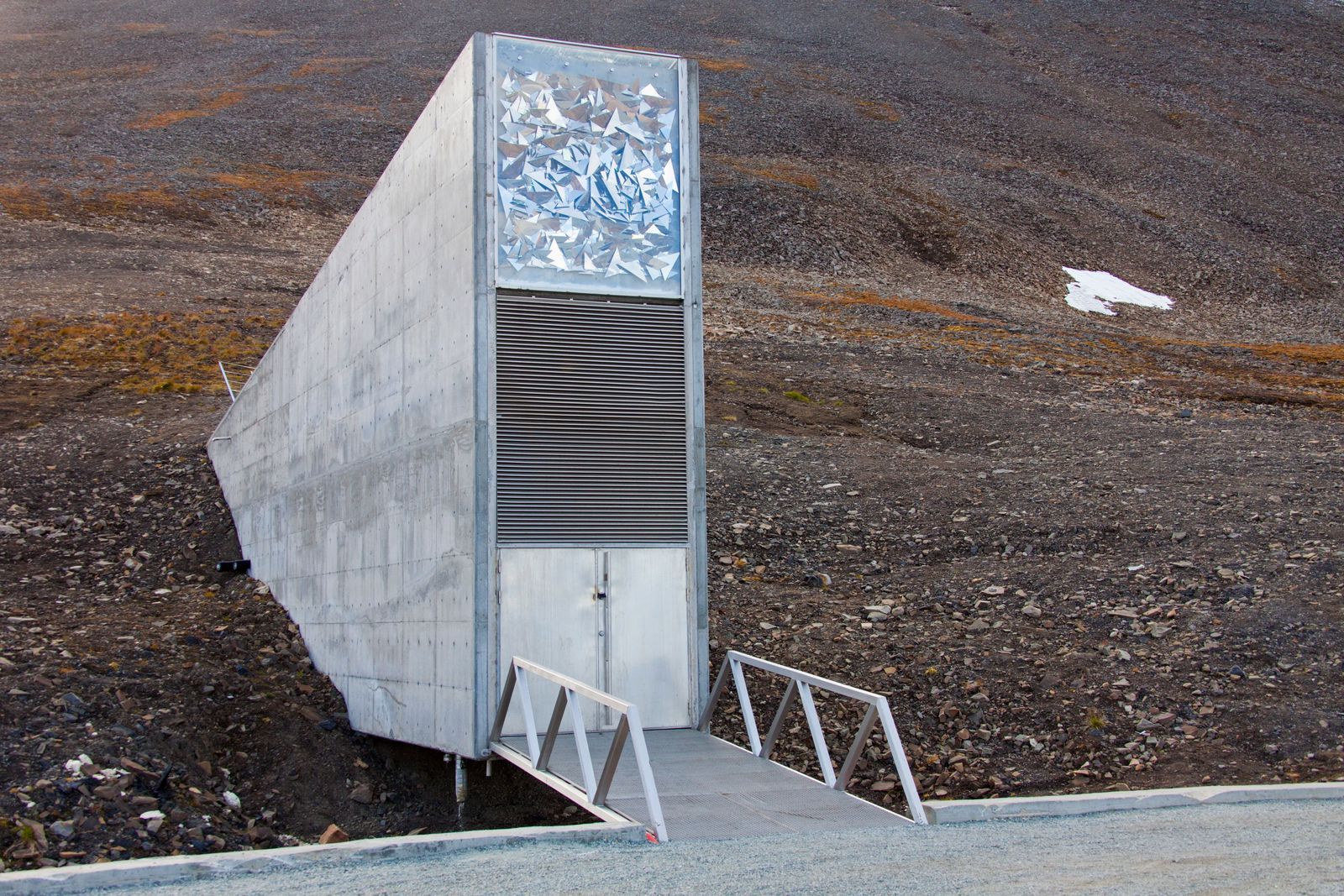From the outside, it may look like a refuge for mountaineers, but this intriguing bunker in Norway is, in fact, the Svalbard Global Seed Vault. Located on the Norwegian island of Spitsbergen, roughly 1,120 kilometres from the North Pole, it was built in 2006 to protect as many varieties of agricultural seeds as possible. The goal is to assure that the cultivation of these crops can be continued even following epidemics, natural disasters, or war, as was the case when Aleppo, in Syria, was attacked in 2015. After the conflict subsided, the city withdrew seeds it had previously deposited with the vault.
To maintain these seeds under ideal conditions, it’s not possible to simply store them in any ordinary building. This specially designed vault is managed by the Norwegian government, the Crop Trust, and NordGen, a sustainable use organization which is a partnership of the five Nordic countries. An isolated location was chosen for the highly secure vault and it was built with very specific conditions in mind for the seeds. The facility now protects the seeds that represent some 12,000 years of agricultural development.
Prior to the construction of the current vault, there were two other seed banks run by the same organisations. Frozen seeds were stored in an abandoned coal mine (also on the island of Spitsbergen) and in another location in South Africa. They were brought together in 2006 in the current vault designed by Norwegian architect Peter W. Söderman. Dug 120 metres deep into a mountain, it consists of a 100-metre corridor with three vast rooms providing over 16,000 square feet of storage space. The seeds are sealed in special packets designed to prevent mould.
The island of Spitsbergen was chosen because of its lack of tectonic activity and the quality of its permafrost (the soil is permanently frozen at -18 degrees), helping to create ideal conservation conditions. Most of the seeds in the vault could survive for several hundred or even thousands of years. “It’s a bit like being in a cathedral,” Lise Lykke Steffensen, executive director of NordGen, the gene bank responsible for daily operations of the bunker, told The Guardian. “It has high ceilings and when you’re standing inside the mountain, there’s hardly any sound. All you can hear is yourself.”

